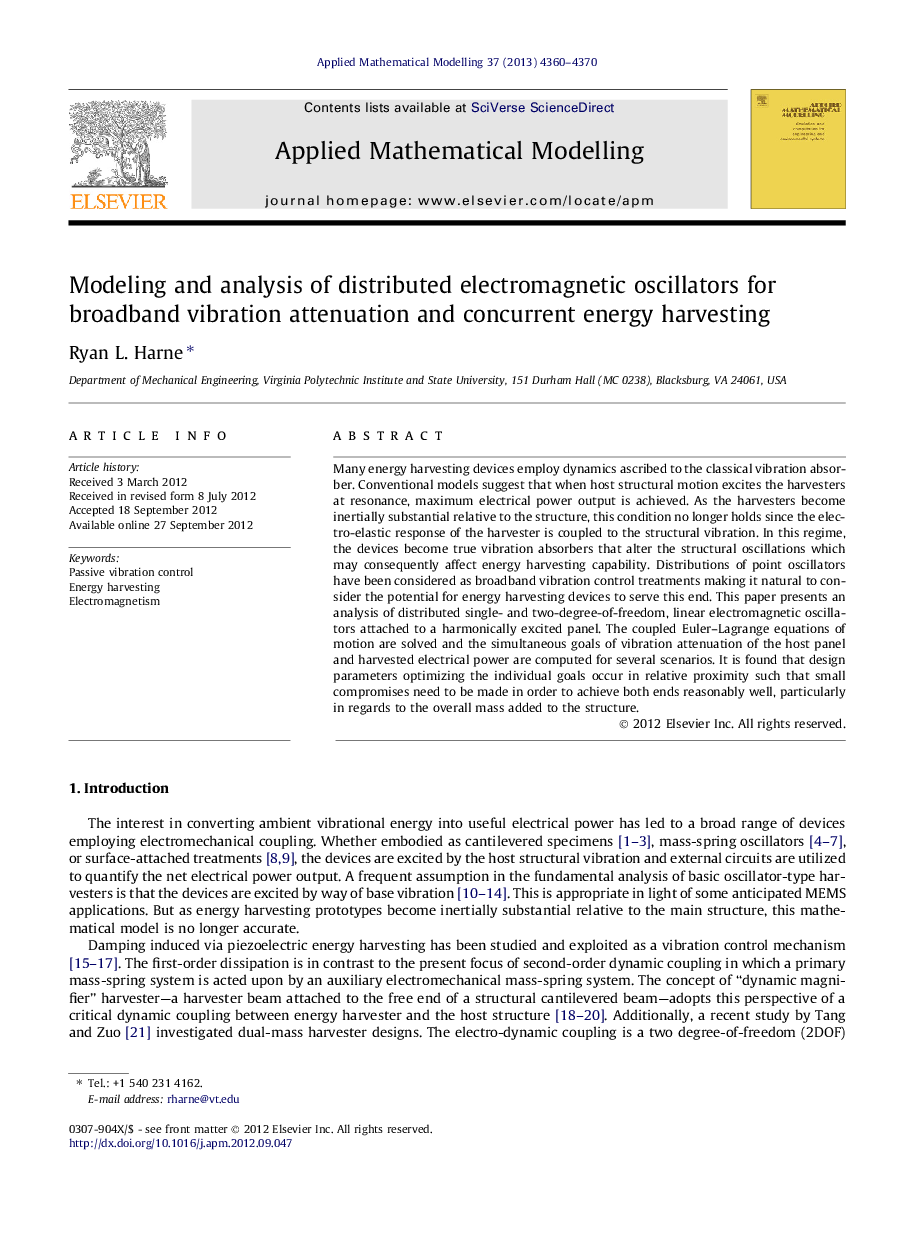| Article ID | Journal | Published Year | Pages | File Type |
|---|---|---|---|---|
| 1704697 | Applied Mathematical Modelling | 2013 | 11 Pages |
Many energy harvesting devices employ dynamics ascribed to the classical vibration absorber. Conventional models suggest that when host structural motion excites the harvesters at resonance, maximum electrical power output is achieved. As the harvesters become inertially substantial relative to the structure, this condition no longer holds since the electro-elastic response of the harvester is coupled to the structural vibration. In this regime, the devices become true vibration absorbers that alter the structural oscillations which may consequently affect energy harvesting capability. Distributions of point oscillators have been considered as broadband vibration control treatments making it natural to consider the potential for energy harvesting devices to serve this end. This paper presents an analysis of distributed single- and two-degree-of-freedom, linear electromagnetic oscillators attached to a harmonically excited panel. The coupled Euler–Lagrange equations of motion are solved and the simultaneous goals of vibration attenuation of the host panel and harvested electrical power are computed for several scenarios. It is found that design parameters optimizing the individual goals occur in relative proximity such that small compromises need to be made in order to achieve both ends reasonably well, particularly in regards to the overall mass added to the structure.
